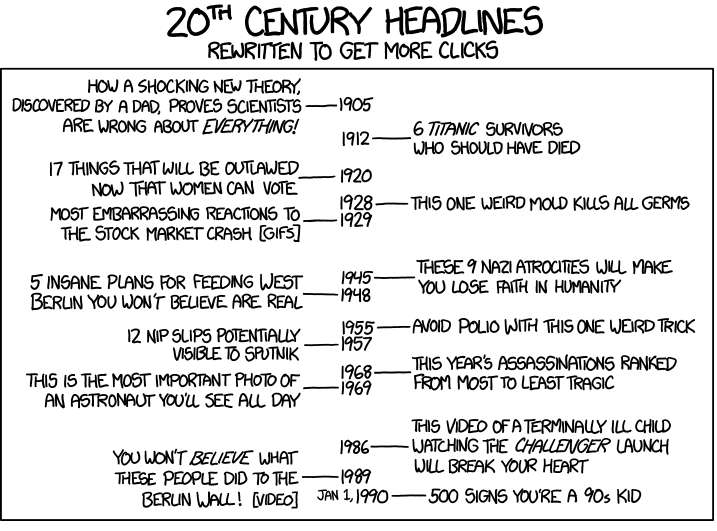It seems like one can’t go anywhere on the internet without being exposed to some sort of obnoxiously catchy title that is practically begging to be clicked on. Whether it’s a slideshow of before-and-after weight loss pictures that will “blow your mind,” or an article talking about an obsolete cultural phenomenon that “only 90s kids will understand,” these links have permeated nearly every social media site and search engine. These attention-seeking articles are known as linkbait. Linkbait (also known as clickbait, although some people argue that they are different), is a type of digital advertising technique that showcases a story with a provocative headline meant to raise the website’s search ranking and capture long-term clicks. The content is only secondary to the headline itself because the primary purpose is to yield more website traffic, and thus, obtain more revenue with the hopes that the loyal viewers will click on their ads. Although most people claim to ignore these articles, there is definitely more than enough money to be made in the link advertising market. In the United States alone, the market is worth approximately $43 billion dollars. Unfortunately, only a select handful of tech companies reap a large majority of the benefits. Google accounted for 32 percent of global net digital ad revenues in 2013, and 40 percent in the United States. It is estimated that only 12 percent of digital ad revenues are reaped directly by media companies.
One of the most prominent and successful exploiters of linkbait is Buzzfeed. Hated by some, but read by many (85 million people a month, to be exact), it is one of the most prominent media content aggregators today. Its advertising method is unique in the realm of traditional digital marketing because its main purpose isn’t to sell you a product or service, or frankly, even push an opinion or idea (this comes as secondary). Buzzfeed’s primary purpose is to generate high page views, which in turn generates a higher ad revenue. Capitalizing on the power of viral content and a loyal reading base, the website makes money from its advertising through a unique digital advertising model called native advertising. According to Sharethrough, native advertising is a form of paid media where the ad experience follows the natural form and function of the user experience in which it is placed. The design of the advertisement tends to look and feel just like the natural content of the website, which generates a higher click-through rate. In fact, while traditional digital advertising tends to have a miniscule click-through rate of .2%, Buzzfeed boasts click-through rates of 1-2%.
Perhaps the seemingly neverending trend in headline formats perpetuated by websites such as Buzzfeed shows the general population’s revealed preference of information content. After all, last Thursday, Buzzfeed’s article about the infamous debate over #TheDress yielded 16 million unique views and almost as many strongly-worded tweets, while a marginal amount of people were talking about the invasions in Iraq that transpired earlier on the same day. It’s hard to deny that in this day and age of internet sensationalism, titles for articles with meaningful or scholarly content can seem relatively bland. On a lighter note, a few days ago, I stumbled across a hilarious blog post that jokingly solves the problem of boring scholarly literature titles. Written by Johan Fourie, he writes examples of what titles of famous economic literature would be if they used a Buzzfeed-esque linkbait format. Here are a few of my favorites that he wrote (with the links to the actual essays if you’re feeling especially curious):
His bank wouldn’t give him a loan. Then Joseph tried this.
One more reason to blame the French!
Janet Yellan takes her husband along when she buys a secondhand car. Here’s Why.

